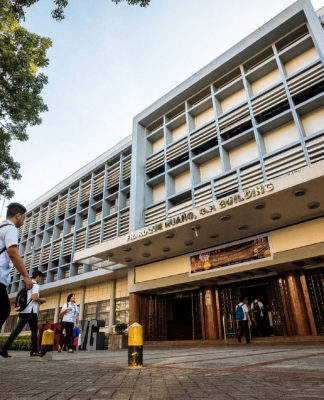IF RISING electric bills and fuel costs make you fume and throw a fit, spare the plate. A Thomasian has validated the potential of ceramics to be superconductors of electricity, dispensing the need for costly power sources and conduits.
Jan Arid Jael, an Applied Physics graduate of the College of Science, made a thesis research analyzing the capacity of ceramics to facilitate electricity flow, acting as reliable superconductors.
“Superconductors are materials that can conduct electricity without the use of a power source,” Dr. Augusto Morales Jr., Physics professor and Jael’s thesis adviser, told the Varsitarian. A typical circuit composed of a battery, wires, and an electric receptor produces heat when electricity flows––an evidence of internal resistance of electrons. With superconductors, there is no resistance of electrons, so electrons flow without creating and wasting heat energy.
According to Morales, since resistance is lacking in superconductors, power sources like batteries and fuel-generated power plants inducing the flow of electrons will not be needed. As a result, electricity can directly flow without generators through superconductors. Present applications of superconductors include Magnetic Resonance Imaging (MRI), which is used by doctors to view the human body like x-rays. MRI is less harmful to the human body and produces a clearer image compared to traditional x-rays.
However, finding viable and cheap superconductors has been the problem of physicists. Superconductors are not widely used since they only work at very low temperature, about 10° Kelvin or -263 degrees Celsius (°C). Liquid helium, an element that liquefies at very low temperature, is needed to cool down superconductors, but it is expensive. Jael’s thesis proved the electron-spin susceptibility of cheap ceramic material as superconductors. Electron-spin susceptibility is the ability of electrons to spin in reaction to a magnetic field.
“Certain superconductors use liquid nitrogen which is cheaper and works at a more feasible higher temperature (-90°C), compared to liquid helium (-263°C). These superconductors are made of ceramics,” Morales said. “But since high-temperature superconductors are magnetic in nature, we need to know how magnetism would affect electric flow in ceramics.
Jael’s thesis examined the possibility for electrons to move in superconductors like ceramics, even in the presence of a magnetic field.
Electron spin follows a pattern when exposed to magnets. The main problem of using superconductors at higher temperature, is that it could disrupt the magnetic order of electrons. But ceramics could be capable of acting as superconductors despite a magnetic background, after determining its electron-spin susceptibility.
Applications of superconductors are just starting and Jael’s thesis can be a landmark contribution to the long search for alternative energy sources. It is possible that one day, electrical devices can be used without batteries or cars, running on plates not gasoline. Kingbherly Li
















